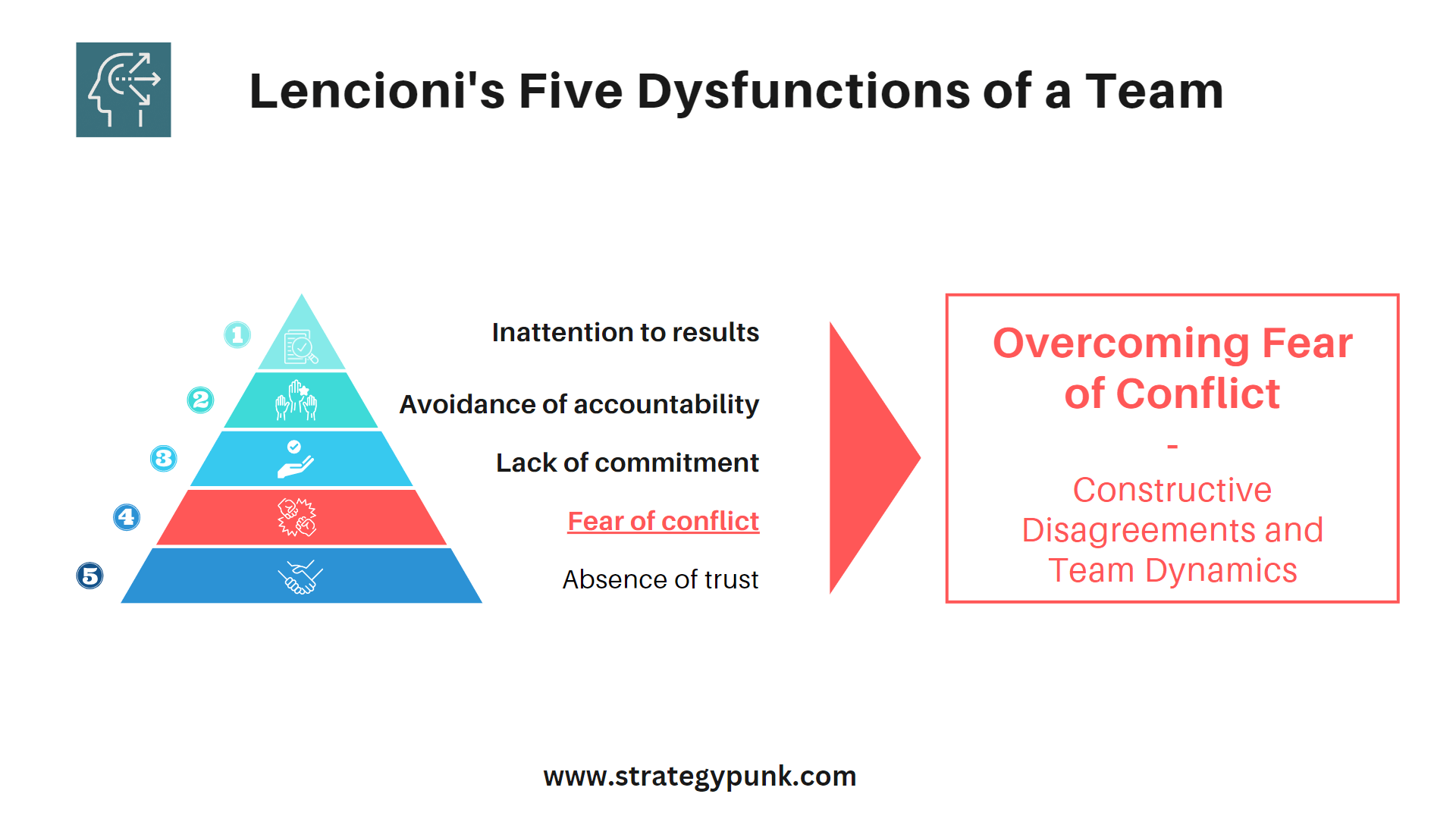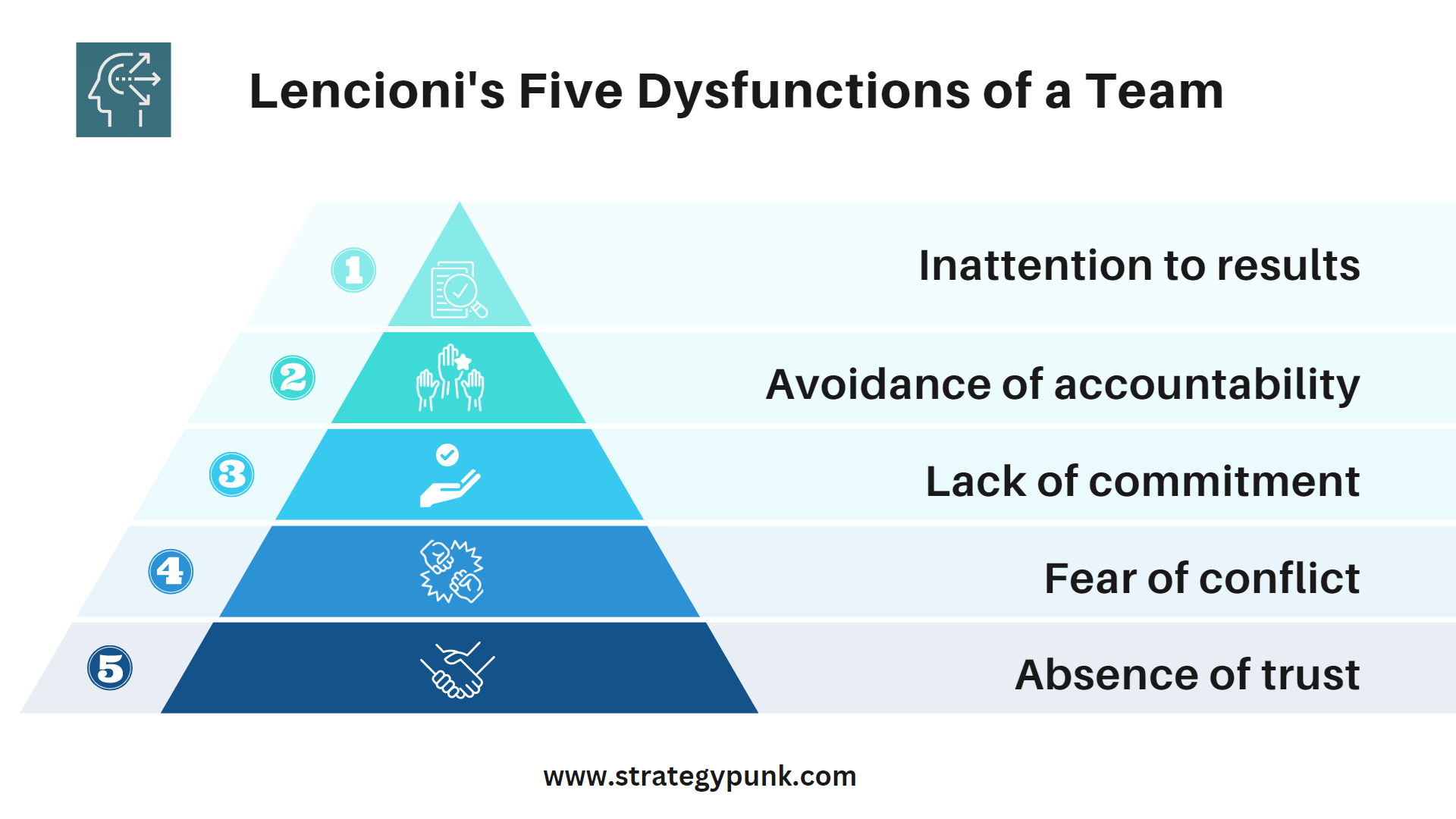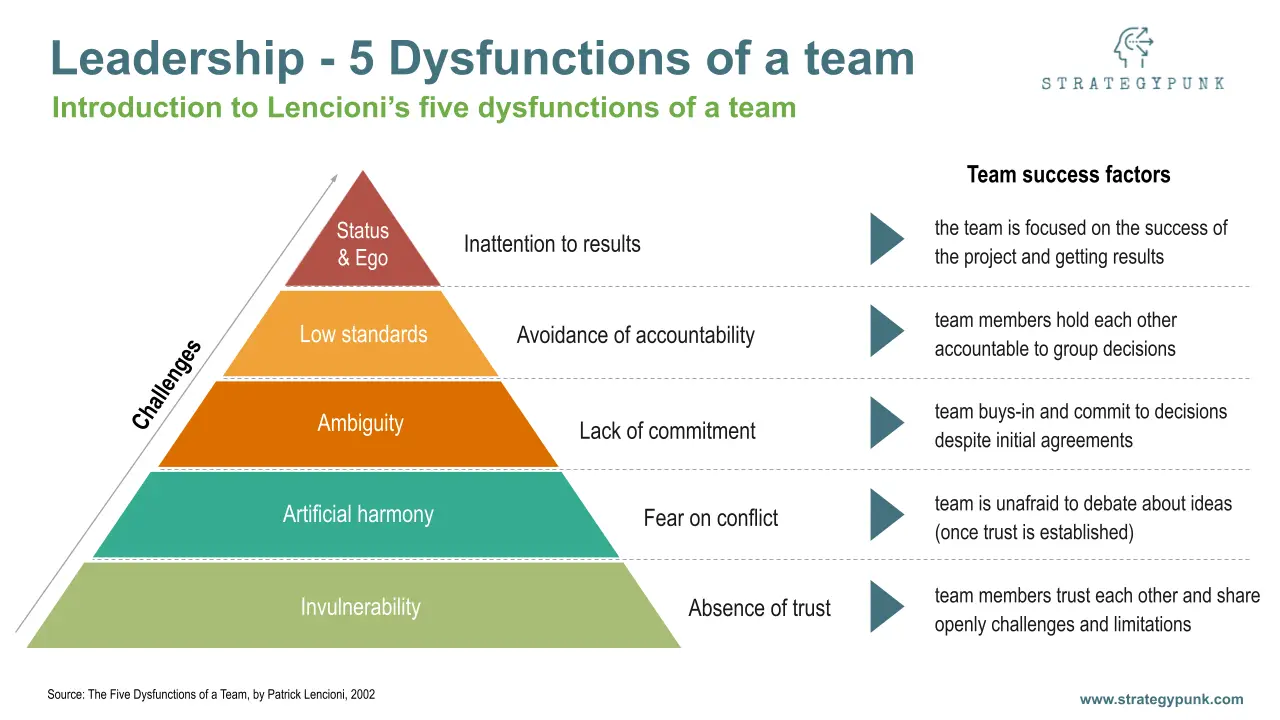Overcoming Fear of Conflict: Constructive Disagreements and Team Dynamics
Ever considered conflict could be your team's most untapped resource? Step into the world of 'Overcoming Fear of Conflict: Boosting Teamwork through Constructive Disputes' and unearth transformative strategies to turn disagreements into a powerhouse of innovation and success.

Introduction
Overcoming the fear of conflict is essential for both personal and professional growth. You will inevitably encounter various opinions and perspectives when working in a team environment. Embracing these differences and fostering constructive disagreements can lead to more robust team dynamics and improved outcomes. So, let's look at how you can overcome your fear of conflict and use it to your advantage.
First, understand that conflicts and disagreements don't need to be negative. When approached with an open mind and the right attitude, they can become opportunities for growth and innovation. By valuing diverse viewpoints, you can challenge your ideas and assumptions, leading to better decision-making for your team.
Next, remember the importance of communication. Conflict resolution relies heavily on active listening, empathy, and clear articulation of your thoughts and feelings. By developing these skills, you can better navigate disagreements and create a more inclusive and supportive team environment.
Lencioni's Five Dysfunctions of a Team and the Fear of Conflict
As a team leader or member, you may have encountered challenges undermining your team's effectiveness. Lencioni's Five Dysfunctions of a Team is one of the best frameworks to help you tackle those issues.

This model focuses on the following dysfunctions:
- Absence of Trust
- Fear of conflict
- Lack of commitment
- Avoidance of team accountability
- Inattention to team objectives
You may have noticed times when your team has experienced a fear of conflict. This dysfunction can create environments where there are boring meetings, back-channel politics, personal attacks, and disregard for controversial topics crucial to your team's success.
To combat the fear of conflict, you must first establish Trust within your team. Trust allows team members to engage in an unfiltered, passionate debate of ideas instead of resorting to guarded conversations or avoiding conflict altogether.
When tackling a fear of conflict, consider these strategies:
- Encourage open, honest discussions about team challenges and controversial issues
- Create a safe space for everyone to share their opinions and perspectives
- Emphasize the importance of constructive disagreement, viewing it as a necessary part of arriving at the best solutions
- Address personal attacks and gossip head-on, shifting the focus back to the tasks at hand
For more information on Lencioni's Five Dysfunctions of a Team, check out our blog post or download our free PowerPoint template to help you facilitate team discussions around these important topics.

By understanding and addressing the fear of conflict, you can create a more dynamic, engaged, and effective team where everyone feels comfortable sharing their ideas and opinions. This ultimately leads to better decision-making, more vital team dynamics, and improved overall performance.
Understanding Constructive Disagreements
The Importance of Conflict in Team Dynamics
Constructive conflicts are essential for fostering a healthy team dynamic. When disagreements are addressed openly and respectfully, it encourages members to voice their opinions and ideas, preventing conformity and paving the way for more creative and effective solutions. A culture of open communication is crucial for building Trust, which is the foundation of any successful team collaboration.
However, it's important to distinguish between constructive and destructive conflict. Knowing the differences will help you address conflicts productively and maintain positive relationships within your team.
Constructive Conflict vs. Destructive Conflict
Constructive Conflict
- Encourages diverse perspectives
- Contributes to team growth and learning
- Strengthens interpersonal relations
- Helps identify and resolve problems
Destructive Conflict
- Undermines team cohesion
- Hinders communication and collaboration
- It damages relationships and trusts
- Results in counterproductive behavior
Creating an environment that allows for open discussions and constructive disagreement is crucial to fostering productive conflict. Encourage your team members to express their opinions freely while being mindful of how to communicate differing viewpoints effectively. Listening to and validating each other's perspectives is vital to maintaining a functional team dynamic even when you disagree.
By understanding the benefits of constructive conflict and how to promote it within your team, you'll be better equipped to handle disagreements, foster a culture of collaboration, and ultimately achieve more effective results. Remember, a healthy team dynamic is the foundation for long-lasting and successful relationships.
The Role of Fear in Conflict Avoidance
Understanding Fear of Conflict
Fear of conflict can be paralyzing and detrimental to your team's growth. When you're afraid of competition, you often avoid situations that may lead to disagreements, ultimately hindering open and honest communication. Recognizing that conflict can be healthy and productive if approached constructively is essential. By understanding the root causes of your fear, you can start to work towards overcoming it.
For example:
- Fear of rejection: You might worry that expressing a differing opinion will make others dislike or reject you.
- Fear of failure: You might fear that engaging in conflict will expose your inadequacies or shortcomings.
- Fear of damaging relationships: You might feel that expressing dissent could ruin your relationships with colleagues.
The Impact of Fear on Team Culture and Productivity
When fear of conflict goes unchecked, it can significantly impact your team's culture and productivity. Here are some ways anxiety can affect your team:
- Stifled creativity: When you avoid conflict, you might miss valuable opportunities to exchange new ideas and perspectives.
- Decreased collaboration: Fear of conflict may make you and others on your team hesitant to share opinions or contribute to discussions, leading to diminished collaboration.
- Resentment and tension: When issues aren't dealt with openly, they can fester and create an atmosphere of resentment and anxiety within the team.
- Reduced decision-making abilities: Avoiding conflict can lead to groupthink, hindering your team's ability to make informed decisions.
To foster a more constructive approach to conflict, consider the following:
- Normalize disagreement: Encourage open expression of differing opinions, emphasizing that diverse perspectives can enrich your team's problem-solving abilities.
- Establish ground rules: Create a safe space for conflict by setting clear expectations for respectful communication.
- Engage in active listening: When engaging in conflict, actively listen to others' viewpoints before sharing yours to show their thoughts are valued.
By taking these steps, you can help create a team culture that embraces constructive conflict and empowers all team members to voice their thoughts, leading to more robust decision-making and increased productivity.
Conflict Management and Resolution Skills
Active Listening and Empathy
To reduce the fear of conflict and improve team dynamics, you must practice active listening and show empathy. Active listening involves giving full attention to the speaker to understand their message. It can be helpful to:
- Maintain eye contact
- Avoid distractions
- Ask clarifying questions
Being an empathetic listener lets you connect with the speaker's emotions and show that you value their opinions. To show empathy, try:
- Acknowledging their feelings
- Expressing understanding
- Validating their perspective
Effective Communication
Clear and effective communication is another crucial skill when navigating conflict. Remember to:
- Use "I" statements to express your thoughts and feelings
- Be concise and avoid accusatory language
- Focus on the issue at hand, not personal attacks
Also, please don't use email for conflict resolution when you work remotely. Instead, opt for video conferencing or face-to-face meetings, as tone of voice plays a significant role in effective communication.
Understanding Positions and Interests
A key aspect of constructive disagreement is distinguishing between positions and interests. Positions are specific demands or desires, while claims refer to the underlying needs, values, or concerns driving those positions. To better navigate conflicts, make sure you:
- Identify your interests as well as the other party's
- Explore all possible solutions
- Recognize shared or compatible interests
Focusing on these aspects can lead to a resolution that satisfies both parties. Remember, practice makes perfect. As you work on honing your conflict management and resolution skills, you'll contribute towards a more positive team environment.
Creating a Culture of Constructive Dissent
Embracing Diverse Opinions and Debate
In your team, encourage the sharing of diverse opinions and the practice of healthy debate. Welcome different perspectives, as they can lead to a better understanding of problems and the development of innovative solutions. Foster an environment where everyone is open to giving and receiving constructive feedback. This can be achieved by:
- Setting clear expectations and guidelines for communication
- Encouraging active listening and asking open-ended questions
- Acknowledging and validating other team members' viewpoints
You can incorporate structured debate formats, like role-playing or formal debates, to further promote constructive dissent in your team's decision-making process.
Building Psychological Safety and Trust
Building Trust and creating a psychologically safe environment is paramount for constructive dissent flourishing. To achieve this, you should foster openness, respect, and empathy within your team. Please ensure that all team members feel valued and their contributions are recognized. Some ways to promote psychological safety and trust within your team include:
- Encouraging team members to express their thoughts and feelings openly
- Showing appreciation and gratitude for their contributions
- Addressing conflicts in a timely and respectful manner
- Offering support and guidance in challenging situations
By embracing diverse opinions, practicing healthy debate, and promoting psychological safety and Trust, you can create a culture of constructive dissent within your team. This will ultimately lead to improved decision-making, innovation, and team performance.
The Benefits of Overcoming Fear of Conflict
Enhanced Decision-Making Process
When you overcome the fear of conflict, your decision-making skills will improve. Engaging in constructive disagreements allows you and your team to synthesize diverse perspectives and ensure that solutions are well thought out. Having a variety of opinions leads to more robust decisions, as it minimizes groupthink and the possibility of overlooking significant issues.
Strengthened Relationships and Teamwork
Dealing with conflicts healthily can improve your relationships with your team members. When everyone feels comfortable voicing their opinions, it promotes transparent communication and leads to a better understanding of each person's perspective. This creates an environment of Trust, enabling you and your team to work together more effectively.
Increased Innovation and Problem-Solving
Embracing healthy conflicts can lead to increased innovation and problem-solving within your team. When everyone shares their ideas and works together to resolve disagreements, it fosters creativity and encourages people to think outside the box. By overcoming the fear of conflict, you create an environment that values diverse opinions and promotes innovative solutions.
In summary, embracing constructive disagreements and overcoming the fear of conflict can improve your decision-making, relationships, teamwork, and innovative problem-solving abilities. These benefits will enhance your individual growth and contribute to your team's success.






